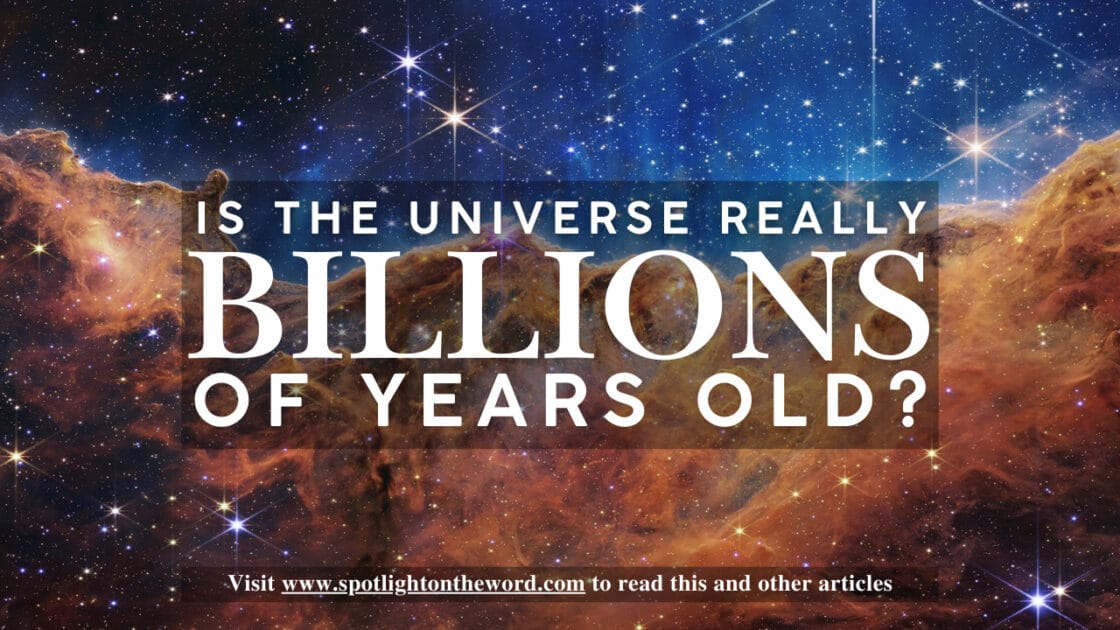Assumptions, Dating Methods, & Implications
By: Obed Mortey
Many cosmologists estimate the age of the universe to be at least 13.8 billion years [1]. Similarly, it is almost universally accepted among geologists that the Earth is approximately 4.56 billion years old. These estimates are widely regarded as accurate and factual to the extent that the notion of a younger Earth is often met with skepticism. One of the most contested and ridiculed perspectives is the proposition that Earth and the universe may be only a few thousand years old [2]. In his seminal work summarizing the findings of Radioisotopes and the Age of The Earth (RATE) research, Dr. DeYoung challenges the prevailing evolutionary-based estimates of Earth’s age [2].
According to RATE research, there are significant flaws in evolutionary-based assumptions that form the foundation of contemporary scientific estimates of the Earth’s age. These flaws warrant a thorough examination to assess their impact on the validity of the current billion-year estimates endorsed by mainstream scientists. While many skeptics have dismissed the notion of a younger Earth, a growing number of scientists are beginning to question these deep-time estimates.
Over time, there has been increasing awareness of the presence of small quantities of carbon-14 atoms in locations where they are not expected. Given the current half-life of 5,730 years, C-14 atoms should not exist in any trace form in “ancient” fossils, carbonate rocks, or coal. However, the presence of trace amounts of this element in fossils purported to be millions of years old is increasingly considered untenable. If these fossils and rocks, dated as ancient by evolutionary methods, still contain C-14 atoms after millions of years, they cannot be older than a few thousand years. Indeed, the presence of C-14 in these fossils poses a significant challenge to those who support evolutionary-based timelines.
Another significant challenge for adversaries of young Earth is the discovery of substantial helium atom concentrations in zircon crystals. Zircons are tiny crystals often found in granite, which is one of the most abundant rock types on Earth. Zircons brought to the surface from deep underground are assumed to be ancient. The New Mexico zircon crystals studied by the RATE team were originally dated by evolutionists to have a radioisotope age of 1.5 billion years. If this date is accurate, there should not be significant amounts of helium remaining in the crystals 1.5 billion years later, as either negligible or no helium should have been produced by the decay of the internal radioisotope uranium atoms, which have a half-life of 4.5 billion years (or 700 million years in the case of the less abundant uranium-235 radioisotope). The presence of helium in zircons presents a substantial challenge to the concept of deep time and provides compelling evidence for accelerated decay in the past. The evolutionary-based assumption that current nuclear decay rates remain constant over time is incompatible with available evidence. Major catastrophic events in the past, such as the global flood alluded to in the Bible, have the potential to accelerate decay rates, which could explain the observed anomaly. However, when such crucial physical factors are ignored, the validity of estimates becomes questionable. Once again, flawed evolutionary-based assumptions have complicated the reconciliation of these apparent anomalies.
Numerous assumptions underpinning radioisotopic dating have been challenged by recent research. A prevalent assumption is the accurate determination of the initial conditions of the rock samples used in dating. However, the feasibility of accurately determining the initial conditions during the formation of ancient rocks without direct observation remains questionable. This assumption is not only logically unsound but is also refuted by substantial physical evidence. For instance, this assumption has led to the dating of volcanic rocks, known to have recent origins, as ancient [2]. Furthermore, confidence in traditional isochron plots has diminished owing to the discovery of discordant results for the same samples when different dating methods were employed.
Another assumption is the ability to determine and quantify the open or closed nature of the rock samples. The notion that no daughter elements were present at the time of rock formation and that none migrated over time is both implausible and unscientific. Research on polonium radiohalos has demonstrated that isotopes can migrate through rocks and their constituent minerals via hydrothermal transport, undermining the closed-system assumption. The frequent observation that mantle and crustal isotopes readily mix with rock samples further challenges the rationality of the closed-system assumption in rock formations.
These findings represent only a fraction of the broader issue and emphasize the necessity of rigorous testing and adherence to reliable evidence (cf., 1 Thessalonians 5:21). The Bible is posited as the sole reliable source for determining the accurate age of the Earth and universe, as it is believed to be inspired by the Creator of both. This assumption is based not only on philosophical or religious presuppositions but also on sound physical evidence. The Bible is a unique document that has been shown to be reliable and accurate in matters of faith and history. Proof of the reliability and accuracy of the Bible is beyond the scope of this article. However, many scholars agree that compared to other ancient historical documents, the Bible alone provides a surgically precise description of historical events. Despite contemporary skepticism, we assert that only God can disclose the age of the universe and Earth accurately.
In truth, the rejection of the biblical creation account is attributed not to compelling evidence against it but to its implications. The core issue is that if the Earth is not ancient but merely a few thousand years old, and the concept of deep time is superficial, then the biblical account of creation is validated because it is the only remaining account that is supported by available evidence. If this is true, it implies an inescapable responsibility of accountability for humanity, who, according to the Bible, was created in the image and likeness of God (Genesis, 1:26).
References
- New data challenge early JWST claims about the age of the universe. 2024 [cited 2025 February 6, 2025]; Available from: https://news.smu.ca/news/2024/4/22/new-data-challenge-early-jwst-claims-about-the-age-of-the-universe.
- DeYoung, D., Thousands…Not Billions. 2005, Master Books: Green Forest, AR, USA. p. 176.






